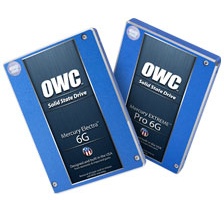For a fourth consecutive time, Apple ranks highest in customer satisfaction among manufacturers of smartphones with a score of 800 on a 1,000-point scale, and performs particularly well in ease of operation, operating system, features and physical design, according to the J.D. Power and Associates’ (http://www.JDPower.com) 2010 U.S. Wireless Smartphone Customer Satisfaction Study. Motorola (791) and HTC (781) follow Apple in the rankings.
The study measures customer satisfaction with traditional wireless handsets and smartphones across several key factors among owners who have used their current mobile phone for less than two years. In order of importance, the key factors of overall satisfaction with traditional wireless handsets are: operation (30%); physical design (30%); features (20%); and battery function (20%). For smartphones, the key factors are: ease of operation (26%); operating system (24%); physical design (23%); features (19%); and battery function (8%).
What’s more, the average reported length of time customers keep their traditional wireless cell phone has increased by 17 percent from 2009, according to the J.D. Power study. The study finds that customers are keeping their traditional mobile devices for an average of 20.5 months, which marks the longest period of time since the study’s inception in 1999, when the average was 17.3 months. The current level of ownership tenure does differ by manufacturer brand, with the highest reported ownership tenure at an average of 27.8 months, and the lowest at 17.5 months. “One possible reason for the significant increase in the length of mobile phone ownership is that more customers are delaying an upgrade purchase due to the general economic downturn, in which the expense of purchasing a new device could outweigh the added benefit of owning it,” says Kirk Parsons, senior director of wireless services at J.D. Power and Associates. “Typically, when upgrading to a new cell phone, there’s the added expense of either subscribing to a more expensive service plan and/or incurring termination fees when switching service providers. Today, consumers are really watching their wallets, and any added discretionary expenses are being considered more thoughtfully than in the past.”
Contributing to this economic sensitivity are higher customer-reported monthly bill amounts, which have increased steadily during the past several years. The study finds the average reported monthly wireless bill is US$78 in 2010, including federal and industry service taxes and fees, compared with $69 just three years ago. The increase is mainly due to the addition of data-related services, increases in usage activity such as text messaging, and added fees and taxes.
“It’s clear that there has been an increase in new service offerings during the past several years and that customers are using these services with greater regularity,” says Parsons. “The fact remains that in today’s economic climate, wireless providers and device manufacturers need to be sensitive to the mindsets of customers and provide added value where possible in order to drive future business and loyalty.” LG ranks highest in overall wireless customer satisfaction with traditional handsets for a fourth consecutive time with a score of 731. LG performs well in all four factors, particularly physical design, features and operation. Sanyo (712) and Samsung (709) follow LG in the rankings.





